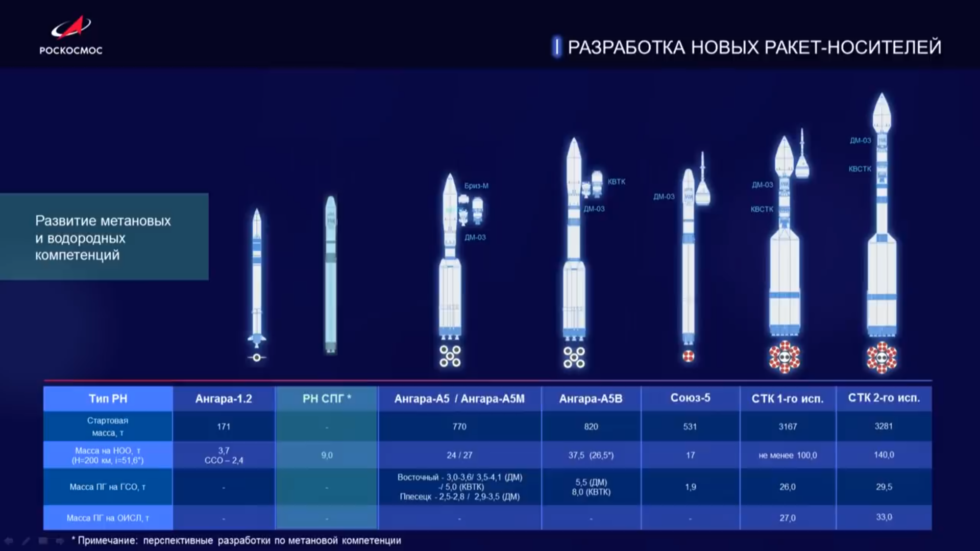How Russia (yes, Russia) plans to land cosmonauts on the Moon by 2030
Ars Technica » Scientific Method 2019-05-28
-

Rockets for the Moon: developmental new vehicles (payload capacity to LEO in metric tons), including various Angara rockets, the Soyuz 5 booster, and Super Thrust Block 1 and Super Thrust Block 2. [credit: Roscosmos ]
Last Thursday, the leader of Russia's state space corporation, Dmitry Rogozin, gave a wide-ranging talk at Moscow University. The speech sought to describe activities happening now at Roscosmos and what may happen in the future, including a potential lunar landing.
Rogozin addressed his comments largely to students at the university, and he sought to paint a picture of a vibrant national space enterprise. This is presumably to boost the desirability of a career in space, as young people have been pursuing aerospace careers in smaller numbers. Reports of low salaries, low morale, and a lack of funding to even remove trash from Roscosmos facilities has not helped this trend.
The Russian plan
Via Robinson Mitchell, Ars obtained a copy of the slide deck Rogozin used for his speech and a translation of its contents (key slides are shown above). Of particular interest is the speech's focus on an independent lunar landing featuring cosmonauts by 2030. Taken at face value—which probably is not wise, given the big question of how Russia would fund such an enterprise—a Russian attempt to land humans on the Moon a decade from now would set up an extraordinary race among that country, NASA's Artemis Program, and China's lunar ambitions.